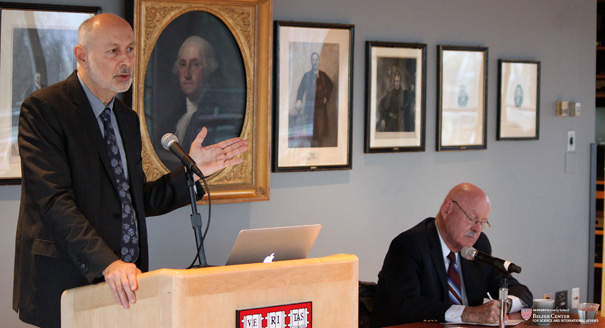Source: Belfer Center for Science and International Affairs
Carnegie’s Yezid Sayigh presented a lecture in Middle East Initiative Visiting Scholar Michael C. Hudson’s Spring 2015 Study Group “Rethinking the Arab State,” in which he examined the political legacy of Saddam Hussein’s regime in ISIS’ leadership structure and methods of control in Iraq, Syria, and beyond. Sayigh pushed for analysis of ISIS that looks underneath their discourse of global jihadi ideology at how ISIS constructs and consolidates power. He advocated examining the political and social contexts which ISIS and its affiliates use to better understand why and how it organizes itself. He argued that similarities between Saddam’s accession and dominance of Iraqi politics and ISIS’ efforts to build an ‘Islamic caliphate’ run deeper than ex-regime figures holding posts, and that ISIS has borrowed almost all of their methods of control from Saddam-era tactics. Sayigh included similarities in use of graphic (and widely disseminated) violence to instill fear and eliminate rivals; ideology to pressure regional and global rivals and acquire allies; and financial and material resources to fund operations and build infrastructure by managing key resource flows, while contrasting ISIS’ hands-off economic management style with Saddam’s expansive patronage regime.





